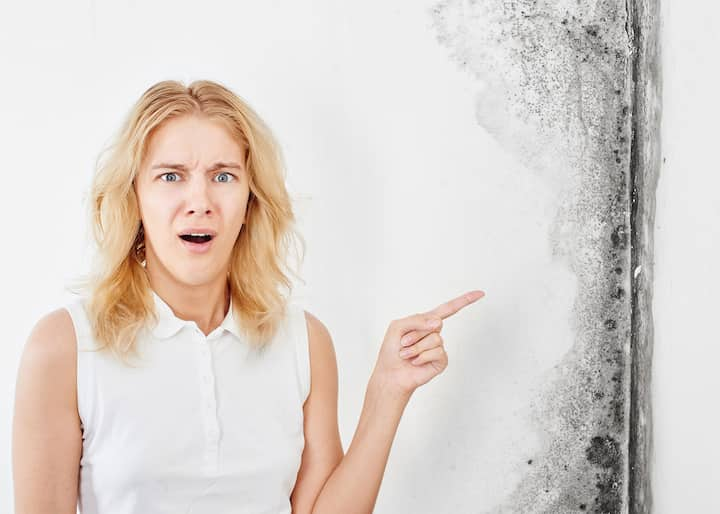Can I Stay In The House While Mold Is Being Removed?
Mold is a common problem that many homeowners encounter, especially in areas with high humidity levels. It can grow on any surface and cause damage to the structure of the house, as well as pose a health risk to those living in the affected area. Mold removal is a necessary step to protect your home and your health, but it can be a disruptive and stressful process.
If you are facing a mold problem in your home, you may be wondering whether you can stay in the house while mold is being removed. The answer to this question depends on various factors, such as the type of mold, the extent of the damage, and the steps involved in the removal process.
In this article, we will explore the different types of mold, the health risks associated with mold exposure, the steps involved in mold removal, and whether you can stay in your home during mold removal. We will also provide tips for minimizing disruption to your daily routine and ensuring a safe and effective mold removal process.
Understanding the Different Types of Mold
Various virulent varieties of mold proliferate in potent and pernicious forms, making it imperative to understand the different types of mold to effectively address and prevent their growth.
Mold is a type of fungus that thrives in warm, moist environments and can be found both indoors and outdoors.
There are several types of mold, including Cladosporium, Penicillium, Aspergillus, and Stachybotrys, each with its own unique characteristics and potential health effects.
Cladosporium, for example, is a common type of mold found in both indoor and outdoor environments and can cause respiratory issues, while Stachybotrys, commonly known as black mold, can cause severe allergic reactions and even neurological problems.
By understanding the different types of mold, homeowners can take appropriate measures to prevent mold growth and effectively address any mold-related issues in their homes.
Health Risks Associated with Mold Exposure
Exposure to mold can have detrimental effects on one's health, ranging from respiratory issues to neurological symptoms. Mold produces allergens, irritants, and sometimes toxic substances, which can cause a variety of symptoms.
Some people are more sensitive to mold than others, and those who are already suffering from respiratory issues, allergies, or weak immune systems are especially vulnerable. Symptoms of mold exposure may include coughing, wheezing, shortness of breath, nasal congestion, eye irritation, skin rash, and headaches.
In some cases, mold exposure can lead to more serious health problems, such as chronic bronchitis, asthma, and even permanent lung damage. It is important to address mold growth in a timely and effective manner, both for the safety of the occupants and the integrity of the property.
Steps Involved in Mold Removal
The process of removing mold from a property involves several steps that must be carried out correctly to ensure the effectiveness of the remediation and the safety of the occupants.
The first step is identifying the source of moisture that is promoting mold growth and then fixing the problem to prevent further mold growth.
Next, the mold-affected area must be contained to prevent the spread of mold spores to uncontaminated areas.
The removal of mold-infested materials, such as drywall or insulation, is then necessary, and all surfaces must be thoroughly cleaned with specialized equipment and cleaning agents.
After the cleanup, the area must be thoroughly dried to prevent any remaining mold spores from growing.
Finally, post-remediation testing is conducted to ensure that the mold has been completely removed.
It is important to note that during the mold removal process, occupants should vacate the premises to prevent exposure to potentially harmful mold spores.
Can You Stay in Your Home During Mold Removal?
Occupants may need to temporarily relocate from their residences during the mold removal process to ensure their safety and prevent the spread of mold spores. While mold removal can be a necessary step to improve indoor air quality and prevent health problems, the process itself can release large amounts of mold spores into the air, which can be harmful to occupants.
Additionally, the use of chemicals and equipment during mold removal can pose a risk to occupants, particularly those with respiratory issues. For these reasons, it is generally recommended that occupants vacate the premises during mold removal.
However, if it is not possible to relocate, certain precautions can be taken to minimize exposure to mold spores, such as using protective equipment and sealing off the affected area. Ultimately, the decision to remain in the home during mold removal should be made in consultation with a professional mold remediation company and based on individual circumstances and risk factors.
Tips for Minimizing Disruption to Your Daily Routine
One way to minimize disruption to your daily routine during mold removal is to plan ahead and make arrangements for temporary living arrangements. This may involve staying with family or friends, renting a hotel room, or even temporarily relocating to a short-term rental.
It's important to communicate with the mold removal company to determine the extent of the work that needs to be done and how long it will take, so you can plan accordingly.
During the mold removal process, it's best to stay away from the affected area to avoid exposure to the mold spores. Additionally, it's important to follow any safety guidelines provided by the mold removal company to ensure that the process is completed safely and effectively.
By taking these steps, you can minimize disruption to your daily routine and ensure that the mold removal process goes smoothly.
Get local quotes for all your Mold Remediation needs
Looking for professional Mold Remediation contractors in Abilene,Texas? Reach out to us today to compare quotes from local experts!
